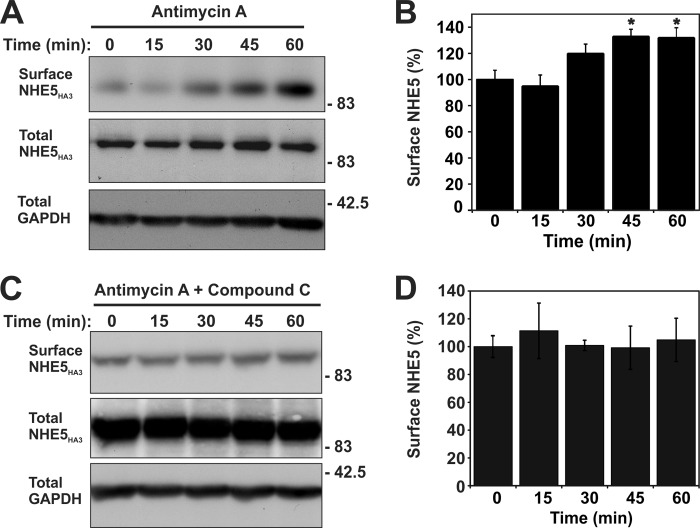FIGURE 12.
Antimycin A-induced metabolic stress increases the abundance of NHE5 at the cell surface that is dependent on activation of AMPK. Stably expressing AP-1/NHE5HA3 cells were treated with (A and B) AA (1 μg/ml) alone or (C and D) in combination with the AMPK inhibitor CC (20 μm) over a 60-min period. Surface proteins were labeled with sulfo-NHS-SS-biotin (0.5 mg/ml) at 15-min intervals followed by quenching with glycine to remove unbound sulfo-NHS-SS-biotin. Cells were lysed and biotin-labeled proteins were extracted by binding to neutravidin-agarose beads. Total cell lysates and biotin-conjugated proteins were resolved by SDS-PAGE and immunoblotted with a polyclonal anti-HA antibody to detect NHE5HA3 and an anti-GAPDH antibody to control for protein loading. B and D, quantification of surface NHE5 was determined by densitometry (n = 7). Surface NHE5HA3 in panel B is significantly different at 45 and 60 min of AA treatment when compared with 0 min (asterisks indicate p < 0.05, one-way ANOVA).

